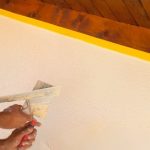When embarking on a home improvement project, it is essential to understand the importance of passing inspection. The consequences of failing an inspection can be costly and time-consuming, not to mention frustrating for homeowners who have put in significant time and effort into their project. In this introductory section, we will explore why passing inspection is crucial, the potential consequences of failure, and the common reasons why projects don’t pass inspection.
Passing inspection is not just a formality; it ensures that your home improvement project meets safety standards and building codes. A failed inspection can result in serious implications such as fines, delays in completing your project, or even having to undo completed work. It is vital to prioritize inspections throughout your project timeline to avoid these potential complications.
Understanding why projects don’t pass inspection is key to preventing failures. Common reasons include inadequate documentation or permits, improper installation techniques, non-compliance with building codes, or overlooked safety measures. By being aware of these common pitfalls ahead of time and taking proactive measures to address them, homeowners can increase their chances of passing inspection successfully.
In the following sections, we will discuss how to prepare for an inspection thoroughly and what steps to take if a project does not pass the initial review. Remaining calm and assessing the situation with a positive mindset are crucial when facing a failed inspection outcome.
By understanding the feedback from the inspector and identifying specific areas that need improvement or correction, homeowners can develop a plan for remedial actions. Through open communication with inspectors and professional advice if needed, necessary changes can be implemented before requesting reinspection.
Overall, taking inspections seriously throughout your home improvement journey is essential for ensuring safety, legal compliance, and ultimately successful completion of your project. While setbacks may occur along the way, they can be overcome with determination and proper action. In this article’s subsequent sections, we will delve into preparing for inspections thoroughly and handling failed inspections effectively so that readers feel empowered when faced with these challenges.
Preparing for the Inspection
Before a home improvement project undergoes inspection, it is crucial to adequately prepare in order to increase the chances of passing on the first attempt. This involves several key steps to ensure that everything is in order and meets the necessary requirements.
Firstly, it is essential to gather all the necessary documents and permits required for the project. This may include architectural plans, building permits, electrical permits, plumbing permits, and any other relevant documentation. Ensuring that these documents are readily available and organized will save time during the inspection process.
In addition to having all the paperwork in place, it is important to make sure that the project is physically ready for inspection. This means completing all planned work and ensuring that everything is functioning properly. It is advisable to conduct a thorough walkthrough of the project area beforehand, checking for any potential issues or areas of non-compliance with building codes.
Lastly, double-checking all work for compliance with building codes is crucial. Building codes are in place for a reason – they ensure safety and structural integrity. Carefully review applicable codes and regulations related to your specific project to ensure that every aspect of your work adheres to these standards.
By thoroughly preparing for an inspection, homeowners can increase their chances of passing on their first attempt. Gathering necessary documents, ensuring readiness of the project, and diligently reviewing all work for compliance will help avoid unnecessary setbacks during inspections.
Dealing with Failed Inspection
Dealing with a failed inspection can be frustrating and disheartening, but it’s important to remain calm and assess the situation. Panicking or becoming discouraged will not help rectify the issues that caused the failed inspection. Instead, staying positive and determined will allow you to approach the situation with a clear mindset and effectively address any necessary improvements.
What to do if the project doesn’t pass inspection
If your home improvement project fails inspection, the first step is to take a deep breath and remind yourself that setbacks are a normal part of the process. It’s essential to resist the urge to immediately jump into making corrections without fully understanding what went wrong. Take some time to carefully review the inspector’s report, noting specific areas that didn’t pass inspection as well as any feedback or recommendations provided.
Keeping a positive mindset and staying determined
Failed inspections can feel discouraging, but it’s crucial to maintain a positive mindset and stay determined throughout the process. Remember that failed inspections are an opportunity for growth and improvement. By approaching the situation with resilience and determination, you can effectively tackle any necessary changes or repairs. Stay focused on your end goal of creating a safe and functional space for yourself and your family.
Understanding the inspector’s feedback and recommendations
The inspector’s feedback and recommendations are invaluable in determining what needs to be addressed in order for your project to pass inspection. Take the time to thoroughly understand their comments, asking for clarification if needed. This will allow you to gain insight into the specific issues that caused the failure and develop an effective plan for remediation. By taking this proactive approach, you’ll be better equipped to make informed decisions moving forward.
Evaluating the Inspection Report
Once the inspection has taken place and your home improvement project has failed to pass, it is essential to carefully evaluate the inspection report. This step is crucial in understanding the specific areas that didn’t meet the required standards and determining the severity of the failure. By thoroughly reviewing the inspection report, you can gain valuable insights into what went wrong and develop a plan to rectify these issues.
When evaluating the inspection report, start by identifying the specific areas of your project that didn’t pass inspection. The report should outline these areas clearly, specifying any violations or deficiencies. Take note of any building codes or regulations that were not met, as well as any safety concerns that were raised.
Understanding the reasons for failure is equally important. The inspector’s recommendations and comments can provide valuable information on why certain aspects of your project didn’t meet requirements. Pay close attention to these details and consider them when planning for remedial actions.
| Failed Area | Reason for Failure |
|---|---|
| Bathroom electrical wiring | Inadequate grounding |
| Kitchen plumbing | Lack of proper ventilation |
By visually representing this information in a table, you can easily refer back to it during discussions with experts or contractors who will assist you in rectifying the failed areas.
Remember, evaluating the inspection report is not about assigning blame or feeling discouraged. Rather, it is an opportunity to gain valuable knowledge about how to improve your project and ensure compliance with building standards and codes. With careful evaluation, you can develop a thorough understanding of the issues at hand and take the necessary steps to rectify them.
Engage with the Inspector and Seek Clarification
Engaging with the inspector and seeking clarification is a crucial step in dealing with a failed inspection. By establishing open communication and understanding the specific areas that didn’t pass inspection, homeowners can gain valuable insights and guidance on how to rectify the issues. Here are some important considerations when engaging with the inspector:
Establish Open Communication
When facing a failed inspection, it is essential to establish open communication with the inspector. Reach out to them to discuss the failed areas and seek clarification on their feedback and recommendations. This will not only provide you with a better understanding of what went wrong but also give you an opportunity to address any concerns or questions you may have.
Ask for Clarification
When reviewing the inspection report, you may come across technical terms or details that are unclear. Do not hesitate to ask the inspector for clarification on these matters. Requesting additional information will help ensure that you fully understand why certain areas did not pass inspection and what changes need to be made.
Discuss Potential Revisions or Additional Work Required
Engaging with the inspector also allows homeowners to discuss potential revisions or additional work required for passing inspection. The inspector may provide suggestions or recommend specific actions that should be taken to rectify the failed areas. Having these discussions can help homeowners develop an actionable plan for remedial actions.
By engaging with the inspector and seeking clarification, homeowners can gain valuable insights into what needs to be done to pass inspection successfully. Establishing open communication, asking for clarification, and discussing potential revisions or additional work required are key steps in addressing a failed inspection comprehensively. With this information in hand, homeowners can proceed confidently towards rectifying the issues identified during inspection.
Identifying the Required Remedial Actions
After receiving the unfortunate news that your home improvement project did not pass inspection, it is important to remain calm and assess the situation. This section will guide you through the process of identifying the required remedial actions to rectify the failed areas and ensure a successful outcome.
The first step in this process is carefully evaluating the inspection report. Take the time to review the report thoroughly, paying close attention to the specific areas that did not pass inspection. It is essential to understand the reasons for failure and their severity in order to determine the necessary steps for remediation.
Once you have identified the areas that need improvement, it may be helpful to engage with the inspector and seek clarification. Establishing open communication with the inspector can provide valuable insights into why certain aspects of your project did not meet building codes or regulations. Don’t hesitate to ask for further explanation on failed areas and recommended solutions as this will help you better understand what needs to be done.
In some instances, it may be beneficial to consult with experts or contractors for professional advice. These professionals can provide guidance on how best to rectify any issues and ensure compliance with building codes. Their expertise can prove invaluable in determining an effective plan of action for remediation.
It is also crucial to have a clear understanding of the timeline and potential costs associated with executing these remedial actions. By being aware of these factors, you can properly plan and allocate resources accordingly. Keep in mind that proper documentation should be maintained throughout this process as evidence of compliance during reinspection.
By following these steps and taking careful action towards remediation, you will be well-prepared when approaching the reinspection process. The goal is to correct any outstanding issues promptly and ensure full compliance with building codes and regulations. Remember, open communication with your inspector will aid in avoiding future setbacks.
Overall, while facing a failed inspection may be disheartening, it is vital not to lose sight of your initial goals. Learn from the experience and use it as an opportunity to improve your knowledge and skills for future projects. With determination, proper action, and an understanding of the required remedial actions, you can overcome this setback and successfully complete your home improvement project.
Executing the Remedial Actions
Once you have received the inspection report and identified the areas that did not pass inspection, it is time to begin executing the necessary remedial actions. This stage is crucial in rectifying any outstanding issues and ensuring that your home improvement project meets all building codes and regulations.
Firstly, it is important to determine the specific steps needed to address the failed areas. Depending on the nature of the issues, you may require professional advice from experts or contractors who specialize in that particular field. Seek their guidance on how to best resolve the problems and ensure that the necessary changes comply with building codes.
During this process, it is essential to have a clear understanding of the timeline and potential costs involved in executing these remedial actions. Delays or additional expenses can arise, so be prepared for any unexpected challenges that may come up along the way. Remember to keep detailed documentation of all work done during this phase, including receipts, permits, and any communication with contractors or experts.
Once you have determined the required remediation steps and have a plan in place, it is time to implement those changes. Make sure that all work is carried out diligently and in compliance with building regulations. It may be beneficial to schedule regular check-ins with professionals or inspectors to ensure that everything is progressing as per their recommendations.
By executing these remedial actions successfully, you are taking proactive measures towards addressing any issues identified during inspection and ensuring that your home improvement project meets all necessary requirements. Keep in mind that attention to detail and careful execution will play a significant role in achieving a successful reinspection outcome.
Reinspection
After receiving a failed inspection report, it is important to remain calm and approach the reinspection process with a clear plan of action. Reinspection provides an opportunity to address any outstanding issues and ensure compliance with building codes. In this section, we will discuss how to prepare for the reinspection process, correct any outstanding issues, and maintain open communication with the inspector.
First and foremost, it is crucial to carefully review the inspection report and identify the specific areas that did not pass inspection. Take note of the reasons for failure and their severity. This will help determine where your focus should lie during the remediation process. Make sure to prioritize these areas in order to address them effectively.
Next, establish open communication with the inspector by reaching out for clarification on failed areas and recommended solutions. It is important to have a clear understanding of what changes are required in order to pass inspection. Engaging in a dialogue with the inspector can provide valuable insight into their expectations and requirements.
During this stage, it may also be necessary to discuss potential revisions or additional work that may be required. Be open to suggestions from the inspector and consider their expertise in guiding you towards compliance. This collaborative approach can improve your chances of passing reinspection.
Once you have identified the required remedial actions, take steps towards executing them promptly and efficiently. Consult experts or contractors if necessary for professional advice or assistance. Ensure that all work complies with building codes and regulations as prescribed by the inspector.
As you implement the necessary changes and improvements, make sure to keep detailed documentation of each step in the remedial process. This will not only demonstrate your commitment to rectifying failures but also serve as evidence for future inspections if needed.
Approach reinspection as an opportunity to showcase your dedication towards meeting safety standards and building codes. By following these steps – reviewing the inspection report, engaging with inspectors, executing remedial actions – you can increase your chances of successfully passing reinspection. Remember, setbacks can be overcome with determination and proper action.
Learn and Move Forward
After experiencing a failed inspection, it is important to take the time to reflect on the situation and learn from it. While setbacks can be frustrating, they also provide valuable opportunities for growth and improvement. By applying the lessons learned from a failed inspection to future projects, you can increase your chances of success and avoid similar issues in the future.
One of the first steps in learning from a failed inspection is carefully reviewing the inspection report. Take the time to go through each section and identify the specific areas that did not pass inspection. This will allow you to understand the reasons for failure and their severity. By gaining this understanding, you can prioritize which areas need immediate attention and develop a plan of action.
Next, it is important to engage with the inspector and seek clarification on any failed areas or recommended solutions. Open communication with the inspector can provide valuable insights into what needs to be done to rectify any issues. Ask questions and make sure you fully understand their feedback and recommendations. This will help guide your next steps in addressing the failed inspection.
When identifying required remedial actions, consider consulting experts or contractors for professional advice if needed. Sometimes, certain aspects of a project may require specialized knowledge or skills beyond your own expertise. Seeking guidance can ensure that the necessary steps are taken correctly and efficiently.
Once you have determined the necessary remedial actions, it’s time to execute those changes and improvements. Ensure that all work complies with building codes and regulations during this process. It is crucial to keep detailed documentation throughout this phase as well, as it provides evidence of compliance should there be any future questions or concerns.
Finally, remember that setbacks are just part of the journey towards successful home improvement projects. Reflect on what went wrong during the failed inspection experience but do not dwell on it. Instead, apply what you have learned to future projects so that you can celebrate success upon passing inspection.
| Failed Inspection Lessons Learned | Action Plan for Future Projects |
|---|---|
| Carefully review the inspection report | Gather necessary documents and permits |
| Engage with the inspector and seek clarification | Ensure project readiness for inspection |
| Consult experts or contractors if needed | Double-check all work for compliance with building codes |
| Keep detailed documentation of the remedial process | If failed, remain calm and assess the situation |
Conclusion
In conclusion, successfully navigating the inspection process is crucial for any home improvement project. Failing inspection can have significant consequences, including additional costs, project delays, and potential safety hazards. However, with proper preparation and a positive mindset, it is possible to overcome setbacks and achieve a safe and functional home.
When faced with a failed inspection, it is important to remain calm and assess the situation. Keeping a positive mindset and remaining determined will help you navigate the challenges ahead. Take the time to understand the inspector’s feedback and recommendations, as they can provide valuable insights into what went wrong and how to rectify it.
Once you have carefully evaluated the inspection report, engage with the inspector to seek clarification on failed areas and recommended solutions. Open communication with the inspector is crucial in understanding their expectations and ensuring compliance with building codes. Discuss potential revisions or additional work required to address the issues identified in the report.
Identifying and executing the necessary remedial actions is key to passing reinspection. Determine the steps needed to rectify the failed areas and consult experts or contractors if needed for professional advice. Throughout this process, make sure all work complies with building codes and regulations, while keeping detailed documentation of each step taken.
Finally, view failed inspections as an opportunity for growth and learning. Reflect on your experience and apply the lessons learned to future projects. Remember that setbacks can be overcome with determination and proper action. Celebrate success upon passing inspection, knowing that you have achieved a safe and functional home through your perseverance.
Frequently Asked Questions
Can a contractor get in trouble for not pulling a permit in California?
In California, it is possible for a contractor to get in trouble for not pulling a permit. The state has strict regulations and building codes in place to ensure the safety, quality, and compliance of construction projects. Pulling a permit is an essential part of this process as it ensures that the project is inspected by the local authorities at various stages to ensure adherence to these regulations.
If a contractor fails to obtain the necessary permits, they can face legal consequences such as fines, penalties, or even having their license revoked. Additionally, building without permits may also result in complications when trying to sell or refinance the property.
Can you sue a contractor for not pulling permits in Ohio?
Similarly to California, contractors can face legal repercussions in Ohio for not pulling permits. The state requires proper permits and inspections to ensure that construction projects meet safety standards and code requirements.
While it is ultimately the responsibility of property owners to ensure permits are obtained, contractors are often expected to guide their clients through this process and handle permit applications themselves as part of their professional service. If a contractor fails to do so, they may be held liable for any resulting damages or hazards caused by noncompliance with building codes and regulations.
What happens if you build without a permit in California?
Building without a permit in California can lead to various consequences depending on the circumstances and severity of the violation. When construction is done without obtaining necessary permits, it is considered illegal under state law. In such cases, there are several potential outcomes that can occur. Firstly, if non-permitted work is discovered during an inspection or due to complaints from neighbors or other parties, the homeowner may receive citations or fines from local authorities who have jurisdiction over building code enforcement.
Secondly, insurance companies may refuse coverage for damages related to non-permitted work. Lastly, unpermitted construction can also create issues when trying to sell or refinance the property as buyers often require proof of proper permitting before proceeding with a transaction; lack thereof may significantly devalue the property or even deter potential buyers altogether. In extreme cases, unauthorized construction may be required to be removed or brought into compliance, which can be a complex and costly process.

I’m thrilled to have you here as a part of the Remodeling Top community. This is where my journey as an architect and remodeling enthusiast intersects with your passion for transforming houses into dream homes.





